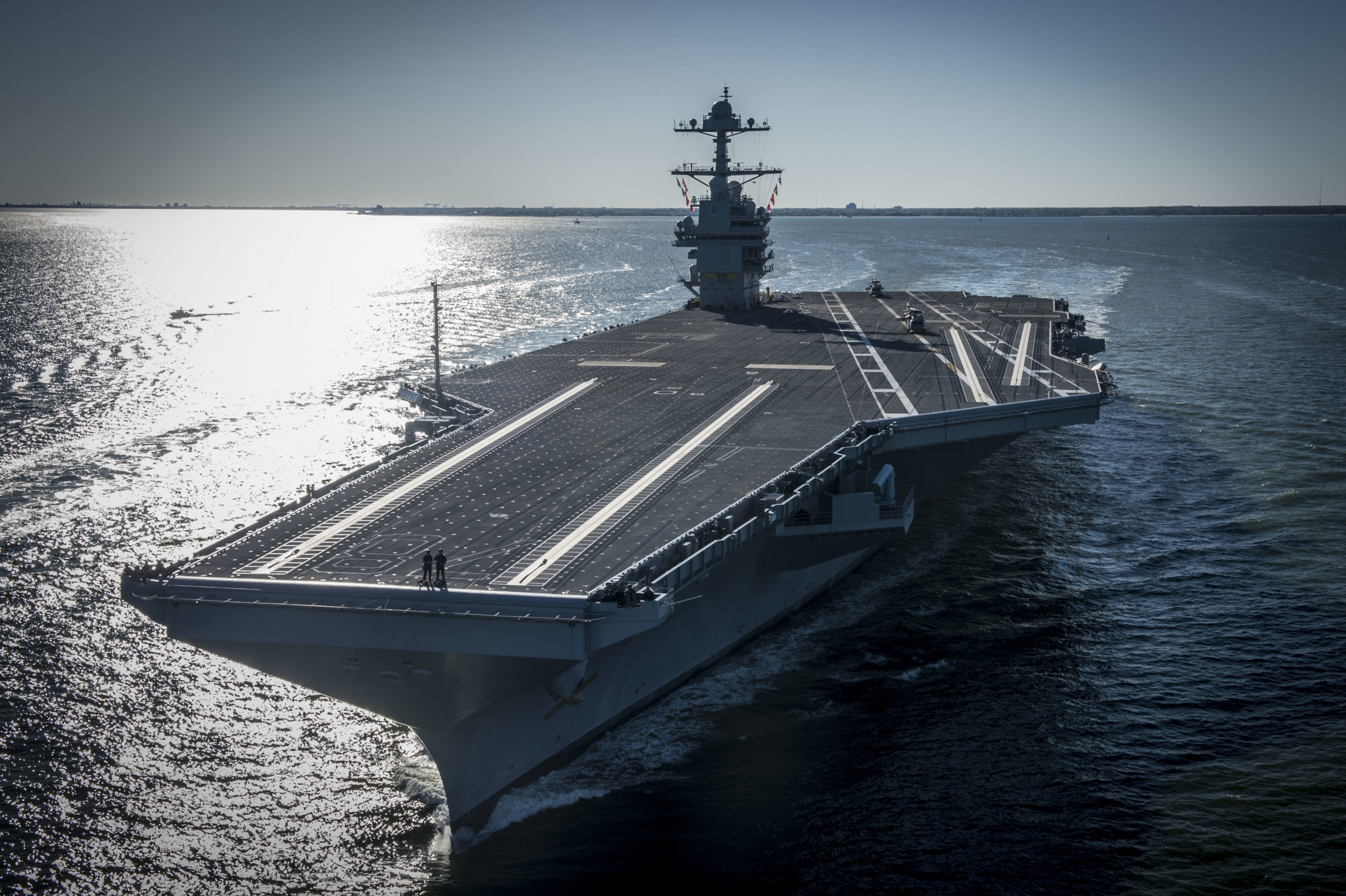The Navy’s proposed shipbuilding plans would reduce the fleet temporarily during the years in which U.S. officials say Chinese President Xi Jinping might move on Taiwan, according to an analysis by the Congressional Budget Office (CBO).
Three different paths outlined in the Navy’s mandated fiscal year 2024 shipbuilding plan seeks to expand the Naval fleet beyond its current 290 battle force vessels, but to do so it has to retire nine ships before new ones can be commissioned, CBO wrote. The schedule for decommissioning ships is still the same under all three alternatives, bringing the fleet to a low of 285 ships by 2027, while China would be growing its fleet.
U.S. defense officials stress that China’s timeline is not set in stone. However, Xi has pledged to develop a combat-ready military by 2027, and while Xi did not promise to invade Taiwan by a specific date, he has made clear his intent to seize the semi-autonomous island by force if necessary. (RELATED: US Doubts Ability To Detect Early Warnings For Chinese Invasion Of Taiwan, Leaked Docs Show)
“We know as a matter of intelligence he has instructed the People’s Liberation Army to be ready by 2027 to conduct a successful invasion,” CIA Director William Burns said in February.
The Navy is banking on deterrence but preparing for the possibility of war with China, the greatest competitor to the U.S., whether over Taiwan or another issue.
The Navy wants to build a larger fleet capable of maintaining a presence at more places across the globe simultaneously than it does at present, according to the CBO. To achieve that goal, the Navy must at least double its fleet, buying between 290 and 340 ships by 2053.
The Navy’s proposed building and decommissioning plans would see the fleet expand to 300 by the early 2030s and 319, 328 or 367 by 2053.
“However, the fleet would become smaller in the near term under all three alternatives. Over the next four years, the Navy would retire 9 more ships than it would commission, causing the fleet to reach a low of 285 ships in 2026 and 2027 before growing again,” CBO wrote.
Even at the projected low, the fleet would still have five more battle force ships under the 2024 plan than at the lowest point of its 2023 plan, CBO said.
In addition, the Navy’s lethality, defined by the number of missile cells distributed across the fleet, would decline by 12% through 2032, CBO wrote. That’s because it would decommission more destroyers and other heavily armed surface and subsea vessels than it would add over the coming decade.

NEWPORT NEWS, VA – APRIL 8: In this handout photo provided by the U.S. Navy, the future USS Gerald R. Ford (CVN 78) is seen underway on its own power for the first time on April 8, 2017 in Newport News, Virginia. (Photo by Mass Communication Specialist 2nd Class Ridge Leoni/U.S. Navy via Getty Images)
Additional risks lurk beyond the size of the fleet, CBO found. The Navy’s cost assessment for new construction ranges from $30.2 billion to $32.6 billion yearly through 2053 counted in 2023 dollars, but that doesn’t account for additional purchases, such as nuclear refueling, that are typically funded out of the shipbuilding account.
Taking into account excessive increases in the costs of labor and materials and unexpected complications, CBO estimated the costs could be as high as $36.1 billion yearly — 43% higher than the Navy’s current budget allocation.
All content created by the Daily Caller News Foundation, an independent and nonpartisan newswire service, is available without charge to any legitimate news publisher that can provide a large audience. All republished articles must include our logo, our reporter’s byline and their DCNF affiliation. For any questions about our guidelines or partnering with us, please contact licensing@dailycallernewsfoundation.org.


